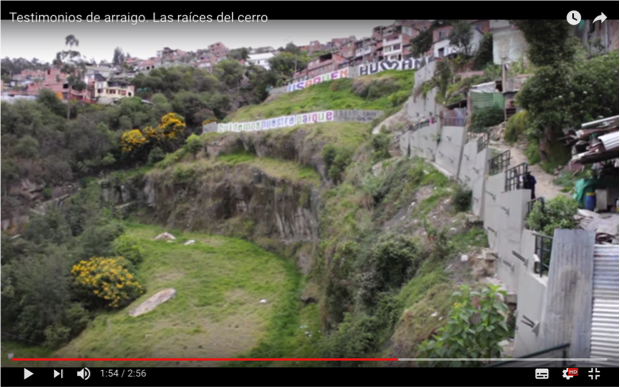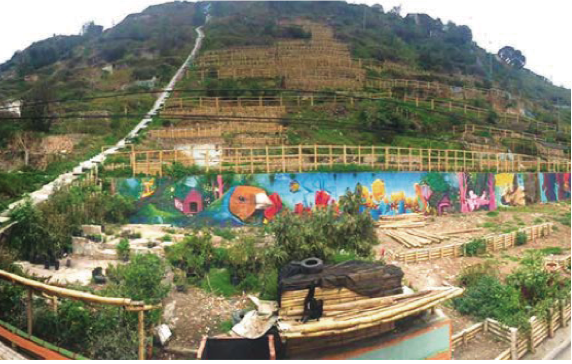by Duván H. López Meneses (ELP 2009) | Researcher, Universidad Nacional – RCFA, Colombia
In Bogota, as in many Latin American cities, an important amount of human settlements were originally occupied by non-formal non-planned ways due to, among others, the high demographic growth, the internal conflict and the low capacity of the governments to provide housing solutions efficiently.
Non-formal settlements in Bogotá represent nowadays a permanent solution for milliards of citizens. The government has been forced to recognize them as legal so these have become valuable in terms of urban land tenure. However in Colombia, with a geographically complex environment, the precarious origins of these settlements and the historical absence of governance have resulted in setting up several climate risks.
Non-formal settlements in Bogota as the result of complex social processes that produce climate risk conditions but where currently inhabitants are increasingly demanding new approaches to understand and manage risk (Image taken from the audiovisual piece “Roots of the hill” at https://arraigo.co/2015/12/13/testimonios-de-arraigo-las-raices-del-cerro/)
Faced with this type of conflict, public administration promotes the execution of engineering solutions or the imposition of restrictive measures on land use, for example, the resettlement of the people.
Different social organizations from the zones impacted by resettlement in Bogota have been joining forces into what is being shaped as a Platform of People Affected by Risk and Resettlement, called ARRAIGO (term in Spanish for Rooting). Their purposes are to promote the discussion of the public policies that implied the resettlement, in conjunction with the efforts required to restore the rights of population, promoting the sharing of knowledge of all actors involved and innovative solutions to be implemented in these zones. The website of Arraigo is available at https://arraigo.co/.
The ARRAIGO Platform nowadays has more than 50 organizations from the community, investigation centers, nongovernmental organizations and think tanks that are searching to consolidate a unified space for interaction with the government agencies, but furthermore, to remark the need of multiple open processes of collective reflection, knowledge and understanding of risk management, to run our urban society into a required adaptive trend in the context of climate change.
Recycling the City Network – RECNET, is an international organization that attended the invitation from Arraigo. With a wide experience on processes of participatory community development, transfer of experiences and promotion of socio-environmental initiatives, RECNET has focused its support to Arraigo in three basic lines: renewal on understanding climate risk assessment and management, promotion of participatory processes for local urban development and technical innovation to improve urban settlements in degraded or high ecologically sensitive zones. Some of the projects of RECNET regarding these issues are available online at http://www.recitynet.org/.
Interventions supported by RECNET to transform climate risk zones by community participation, appropriation and governance. (Image token from the report “Cordillera Sur” at http://www.recitynet.org/copia-de-life-ecorkwaste)
I have been involved with climate risk management and assessment the last 15 years and honestly the models of comprehend the climate risk dynamics are, in my view, far away to include social constrains beyond an engineering approach. Demands from populations affected by resettlement are just coherent with the accepted statement that climate risk are socially constructed processes, as well as that society should commonly contribute to build new sustainable ways of living, habitat and occupation that would necessarily imply the resettlements just as a last alternative to manage climate risk.
Climate risk zones on cities, at least in low developed countries, should be understood, from my perspective, as challenges where nature and humans are in conflict. They are actually hotspots, live expressions of our antique problem about what is the conflict between humans and the nature of planet we inhabit, the planet earth. And this misunderstanding is becoming a risk for us, so we can go throughout these zones and try to figure out a better way on how to relate the people and the nature, or we can keep on resettling the problem and the people on the risk. Moving humans to artificial cubes for housing far from nature will just delay the resolution of the problem.


